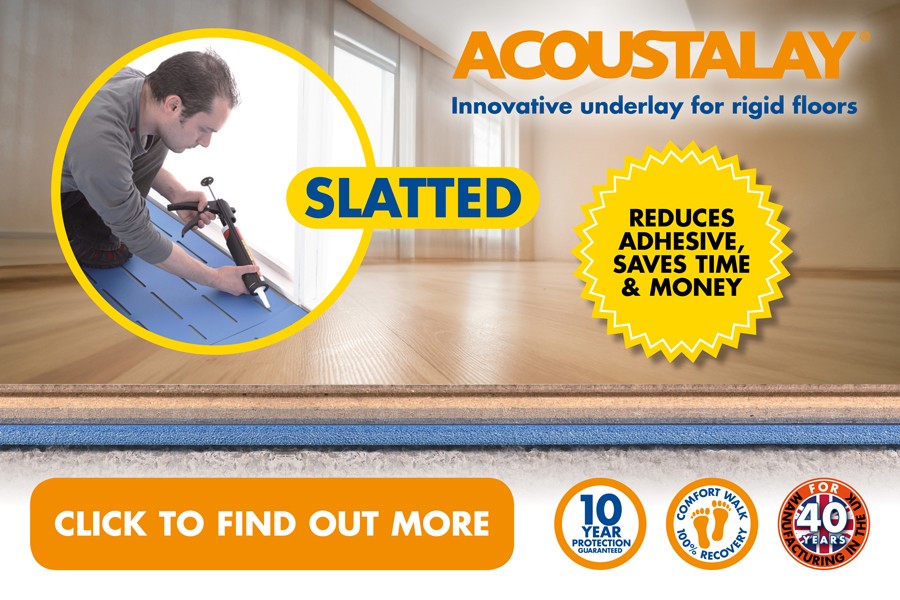Thomas Grayson debunks the most common misconceptions surrounding barrier matting systems
When a project calls for barrier matting, there are many factors that can impact product selection. At Gradus, we believe clarity from the outset can help prevent future issues that affect the balance of safety, performance, and aesthetics.
From design priorities to matwell dimensions, this article debunks common myths about matting and reveals the practical truths every flooring contractor should know.
Myth 1: Design First, specify later.
Reality: While design plays a key role, it’s the correct specification of barrier matting that ultimately determines the available colour and finish options, as not all ranges provide the same selection. With a variety of colours, patterns, and textures available, Barrier Matting can complement the overall design of a space while providing essential protection against dirt and moisture.
Myth 2: One size fits all
Reality: The correct amount of matting is determined by the volume of foot and/or wheeled traffic that will cross the mat. Consideration needs to be given to the number of times a person may cross the mat, such as break time, lunch hour, beginning and end of the day, as well as peak traffic conditions.
The Health and Safety Laboratory (HSL) and the European Floor Safety Association (EFSA) recommend a minimum barrier matting length of 3-4m for low applications (about 78 people per hour) and 8-10m for high applications (about 800 people per hour).
Myth 3: One type of matting is enough
Reality: The most effective barrier matting systems often combine multiple matting types across different entrance zones such as exterior, interior, and circulation areas. A layered approach that uses primary and secondary barrier matting maximises dirt and moisture removal to help reduce the risk of slips. It can also extend the life of adjacent floor coverings by reducing soiling and over frequent cleaning.
Myth 4: All entrances can use the same matting
Reality: Multiple entrances to buildings often receive varying levels of foot and wheeled traffic. Schools, for example, often receive the highest volume of traffic in secondary entrances such as playgrounds, rather than the schools’ official main entrance. The main entrance to a building doesn’t necessarily always receive the highest traffic.
Myth 5: Matting is only for entrances
Reality: While entrances are critical areas for barrier matting, it can also be considered in other areas where there is a risk of dirt and moisture being tracked into an area. Corridors, lift lobbies, and access points are also areas subjected to soiling and heavy wear.
Myth 6 Barrier matting doesn’t affect maintenance costs
Reality: More than 70% of dirt and moisture enters a building through foot and wheeled traffic, leading to increased cleaning and maintenance costs that affect the lifespan of floorcoverings. A well-designed barrier matting system can reduce this by up to 90%, saving on maintenance costs and prolonging the lifespan of floor finishes.
Myth 7: Barrier matting is only required in wet weather
Reality: While Barrier Matting is crucial during wet weather to prevent slips and falls, it’s equally important during dry weather. Dust, dirt, and debris can be tracked into buildings year-round, and a good matting system helps maintain cleanliness and indoor air quality.
Myth 8: All barrier matting systems are the same
Reality: Not all barrier matting systems are created equal. Different environments and pedestrian usage patterns require specific types of matting. For instance, airports often need heavy-duty matting that can withstand high levels of foot and wheeled traffic, while high street shops may require a different product.
In conclusion, by busting these myths, the goal is to equip flooring contractors with the knowledge to make informed decisions when selecting barrier matting for projects. When appropriately specified and installed, barrier matting contributes to improved safety and visual appeal, while also offering cost savings and performance advantages over time for clients.
Gradus supports you from start to finish with the information you need.
Contact Gradus for expert guidance and a wide selection of barrier matting options suitable for education, office, healthcare, hospitality, retail, and leisure projects.
thomas.grayson@gradus.com
www.gradus.com
Thomas Grayson is a barrier matting specialist at Gradus


